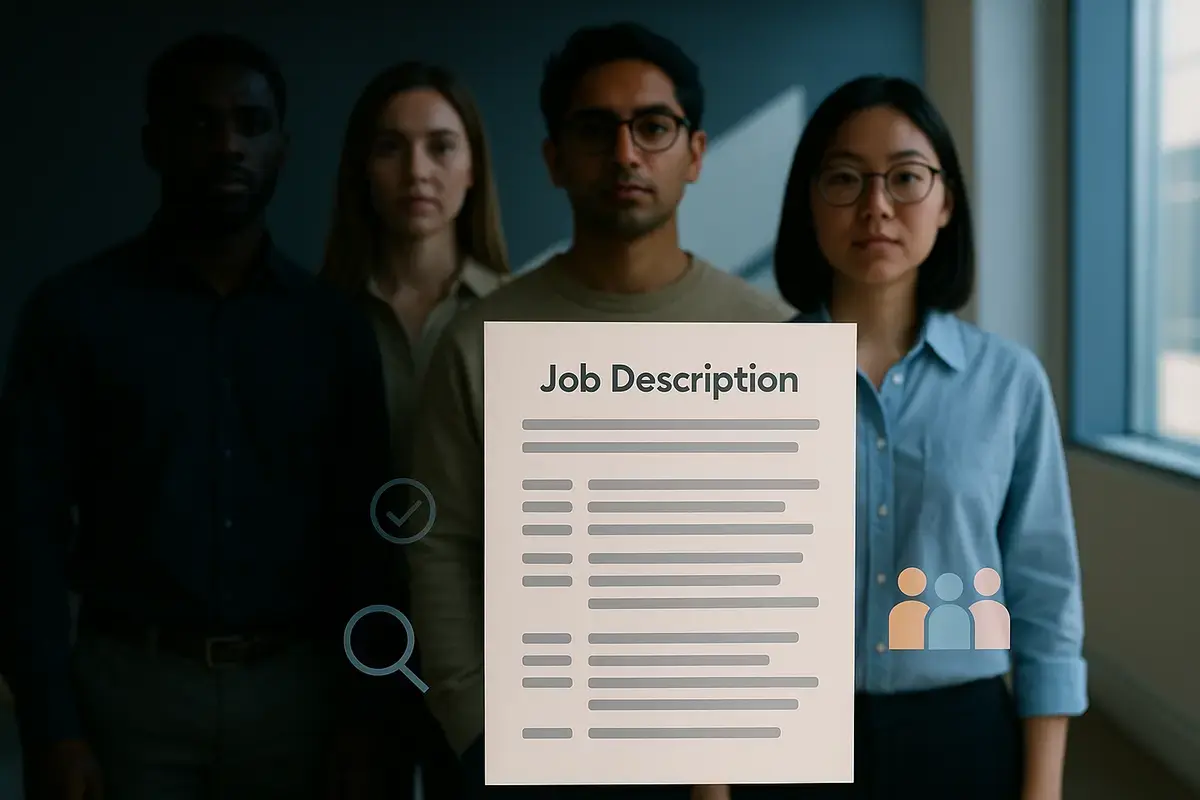Job descriptions are often the first interaction a potential candidate has with an employer. Yet, many organizations unintentionally push away great talent through subtle wording and structural biases. Biases in job descriptions, even when unintentional, can make roles seem less welcoming to diverse applicants.
For Canadian employers aiming to attract diverse talent in a competitive labour market, inclusive job descriptions are not just a “nice-to-have” but a necessity. Eliminating bias means opening the door to broader perspectives, innovation, and stronger teams.
In this blog, let’s discuss how hidden biases in job descriptions affect employment, how you can fix them, and best practices for writing inclusive job descriptions.
What Are Biases in Job Descriptions?
Biases in job descriptions refer to the unconscious preferences and stereotypes embedded in language, tone, or structure that can discourage certain groups from applying. Even well-meaning employers can unknowingly use terms that exclude women, older workers, newcomers, or people with disabilities.
For example:
- Gendered words: “Salesman,” “rockstar,” or “ninja.”
- Age-coded terms: “Energetic young team,” or “digital native.”
- Cultural assumptions: “Must have Canadian experience.”
These subtle signals create barriers that reduce applicant diversity and limit access to qualified candidates who might otherwise thrive in the role.
Types of Hidden Biases in Job Descriptions
1. Gender Bias
Certain words appeal more to one gender than another. For instance, “competitive,” “dominant,” or “driven” are male-coded, while “supportive,” “collaborative,” or “understanding” are female-coded. Balance is key; neutral terms like “motivated” or “team-focused” promote inclusivity.
2. Age Bias
Phrases like “recent graduate” or “digital native” can discourage experienced workers. Instead, focus on skills and adaptability rather than age or tech familiarity.
3. Cultural Bias
When job ads prioritize local experience or specific cultural norms, they inadvertently exclude newcomers or internationally trained professionals. Employers should instead highlight openness to diverse experiences and global perspectives.
4. Disability Bias
Phrases such as “must be able to lift 50 lbs” (when not essential) or “energetic” may deter candidates with disabilities. Employers should focus on core skills and clarify that accommodations are available.
5. Experience Bias
Listing 10+ years of experience for roles that don’t require it narrows the talent pool unnecessarily. Skills-based hiring is a more inclusive and effective approach.
Why Biases in Job Descriptions Are Harmful
- Limit candidate diversity: Biased wording discourages qualified individuals from applying.
- Extend hiring timelines: Narrow criteria result in fewer applicants and longer recruitment cycles.
- Reduce application quality: Employers miss out on top candidates who assume they’re not a fit.
- Create legal risk: Under Canadian law, discriminatory job postings can lead to reputational and legal consequences.
A truly inclusive hiring strategy ensures compliance with the Canadian Human Rights Act and promotes equal opportunities for all candidates.
How to Identify Biases in Job Descriptions
- Use Bias-Checking Tools: Tools like Textio, Gender Decoder, or Ongig’s Text Analyzer highlight problematic wording.
- Peer Review with Diverse Teams: Have multiple reviewers from different backgrounds assess the job posting.
- Benchmark Against Industry Standards: Compare your listings with inclusive postings from leading Canadian organizations.
- Track Demographics: Review application trends; if certain groups aren’t applying, bias might be the reason.
How to Fix Biases in Job Descriptions
1. Use Gender-Neutral and Inclusive Language
Replace words like “salesman” with “sales professional.” Avoid metaphors like “rockstar” or “guru,” and choose balanced terms like “expert” or “leader.”
2. Focus on Skills and Outcomes
Instead of “10 years of experience,” write “proven ability to lead teams and manage projects successfully.”
3. Avoid Jargon and Slang
Corporate buzzwords like “synergy” or “hustler” can alienate applicants. Keep your tone professional and clear.
4. Emphasize Inclusivity
Include statements like:
“We value diversity and are committed to providing equal opportunities for all applicants.”
5. Set Realistic Requirements
Differentiate between “must-have” and “nice-to-have” qualifications to attract a broader range of candidates.
Best Practices for Writing Inclusive Job Descriptions in Canada
Acknowledge Bilingualism: If your company operates in both English and French, note that bilingual candidates are encouraged.
- Include DEI Statements: Demonstrate your commitment to diversity, equity, and inclusion.
- Stay Legally Compliant: Ensure job postings align with the Canadian Human Rights Act and relevant provincial legislation.
- Partner with Specialists: Collaborate with staffing agencies to build bias-free, high-performing teams.
The Business Case for Inclusive Job Descriptions
- Access to a Wider Talent Pool: Diverse candidates bring fresh ideas and innovation.
- Enhanced Employer Brand: Inclusive language improves your reputation as an equitable employer.
- Higher Retention Rates: Employees feel valued and respected, leading to longer tenures.
- Reduced Legal Risk: Compliance with anti-discrimination laws protects your business from liability.
Inclusive hiring is not just ethical, it’s strategic. Organizations that embrace diversity outperform those that don’t, both financially and culturally.
Future of Job Descriptions: AI & Bias-Free Recruitment
As AI-driven tools advance, they can help detect and remove biased phrases automatically. AI-powered writing assistants analyze tone, sentiment, and inclusivity across postings.
Meanwhile, skills-based hiring is replacing outdated credential-focused models. Canadian companies are increasingly using data-driven recruitment platforms to prioritize potential over pedigree, an approach that strengthens fairness and transparency in the hiring process.
Wrap Up
Hidden biases in job descriptions can unintentionally exclude qualified candidates and weaken workforce diversity. By identifying and removing these biases, employers can create more inclusive, engaging, and fair job postings that attract top talent from all backgrounds.
Inclusive hiring isn’t just about compliance; it’s about building stronger, more innovative teams that reflect today’s diverse Canadian workforce.
Partnering with Hire Labour helps your organization eliminate hiring biases and attract the right talent. From crafting inclusive job descriptions to providing expert staffing and recruitment services, we make your hiring process smarter, fairer, and more effective.
Connect with us today to build a diverse, high-performing workforce that drives long-term success!
FAQs
1. What are common biases in job descriptions?
Common biases include gendered language, age-coded terms, cultural assumptions, and unrealistic experience requirements.
2. How do I check if my job description is biased?
Use inclusive language tools, involve diverse reviewers, and compare your posting to inclusive industry examples.
3. Why is inclusive language important in job postings?
It ensures equal opportunity, attracts diverse candidates, and aligns with Canadian anti-discrimination standards.
4. What are examples of gender-neutral terms for job ads?
Use “sales professional” instead of “salesman”, and “leader” instead of “ninja” or “rockstar.”
5. How do Canadian employers ensure bias-free job descriptions?
By adhering to the Canadian Human Rights Act, using inclusive tools, and partnering with staffing experts like Hire Labour.




